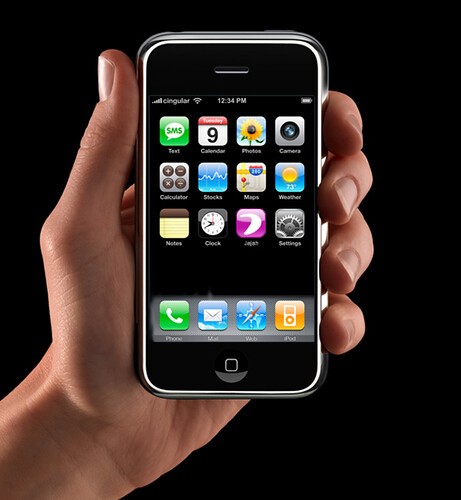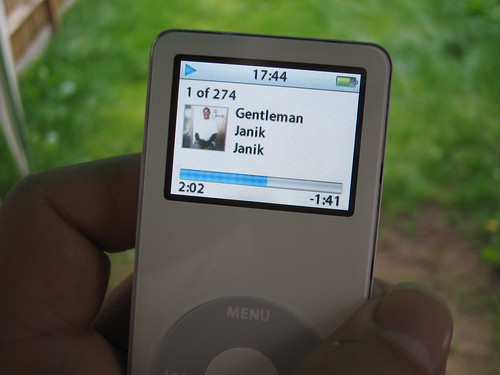I wasn’t going to follow up on Mark Ramsey’s recently blog post “The Future of Radio Will Be An Experience“, as I thought most of it was bang on the money. However, there was part of it that was bugging me, and a conversation with a colleague in the pub after work on Friday prompted me to respond to one point.
My colleague expressed his concern as “WiMax is going to be a real threat to radio”. Mark postulates the same thing periodically in his blog, and used it as a hook in the posting I’m referring to.
So what did I say to my colleague, admittedly over a couple of pints of Wild Hare, to influence his thinking?
We have a real confusion, in part created by the promoters of new technologies like WiMax, between the “application” and the “bearer”. The application is what the consumer experiences, and the bearer is how they get it. So in this case, the application is “radio” and the bearer is “WiMax”.
I’m very clear that long-term success comes from defining a compelling application. Once you’ve worked out what people will want to use and get excited about, then you work out what bearer is best to get it to them with.
So let me briefly define how I think the application of “traditional mass consumption time-linear radio” will look in the future. Yes, there will be other forms of radio, but this example will expose the issues just as well.
I expect that “radio” will continue to be largely consumed as a simultaneous experience by large numbers of people (10,000 – 100,000+), and it will consist of a selection of audio services accompanied by still visuals, some browseable content and a stream of meta-data describing what’s happening on air. It will be mobile, received on battery-powered handheld devices like MP3 players, and have an astonishingly wide range of devices from £29 (US$60) kitchen radios, home entertainment systems, and continue to be a major part of the in-car entertainment experience. Weekly usage will be almost universal. It will be largely free-to-air and advertising funded.
WiMax is a very interesting technology, assuming that theory and field-tests turn into real-life experiences. It’s designed to be wide-area wireless broadband internet, but to achieve this aim it will need dedicated spectrum. As any user of WiFi devices can tell you, the free-for-all of unlicenced spectrum leads to incredibly unpredictable quality of service, and coverage that changes daily. So WiMax operators, if they are to provide any kind of reliability, will have to purchase dedicated spectrum from government, and that’s not cheap. Ask the mobile phone companies in Europe who coughed up about £20bn (€32bn, US$40bn) for their 3G spectrum. Whatever that spectrum costs, it will have to be shared between the users. Added to that, WiMax base stations will cover relatively small areas (larger than mobile phone basestations, way smaller than traditional radio transmitters) so there will be a lot of them, which increases the cost again. WiMax networks will not be cheap.
So on the surface WiMax works the same way as broadband, and therefore appears to be ideal for “radio”, because “radio” works so well on broadband now. Well, the problem is that it won’t work on broadband. It works now, because so few people, relatively speaking, are using it. I very much doubt that more than 10% of the peak audience of any radio station is through streaming. There has been genuine concern about the effect of applications like Joost and the BBC iPlayer on the general health of the Internet if they become successful. It simply won’t scale indefinately. And if genuine wired broadband won’t scale, WiMax doubly-so.
When demand for capacity outstrips supply, the operators have to start prioritising the capacity, which is called managing the “quality of service”. If your e-mail comes down in spurts, you probably don’t know or mind. If your radio or TV services start buffering and glitching, you get annoyed. So providers of real-time media have much more demanding “quality of service” requirements. The easiest way for the operators to deliver quality of service is to charge the provider a premium to access their network and provide guarantees on delivery. Conversely, anyone who isn’t signed up may find their traffic being shunted down the priority list to a point where it simply doesn’t work some (or most) of the time. It’s a platform lockout.
So if the application is “radio” (as described above), how well does it fix WiMax?
- The WiMax network would use expensive spectrum and have expensive infrastructure.
- Every radio would need an ongoing subscription to the WiMax network.
- Each service would use a proportion of that spectrum and infrastructure, which is finite.
- The operator may well charge a premium to the service provider for the right quality of service.
So whilst you can, technically, get some degree of radio to work on WiMax, it’ll be considerably more expensive than using a traditional broadcast infrastructure, cost the listener real money for WiMax subscriptions, leave the service providers open to exploitation by the network operators, and make building a £29 kitchen radio almost impossible.
I’m sure some people will believe that “the market will fix these issues” and so on, but these limitations are those imposed by the laws of physics which won’t respond to profit and business planning. If you want wireless wide-area broadband internet, it will be more expensive than the equivalent capacity delivered one-way as broadcast on broadcast infrastructure.
What Mark goes on to describe in his original blog post is a new application of radio which is genuinely threatening. If traditional radio companies can’t create new and interesting applications for radio, then they will get blown out of the water by new entrants. But the emergence of a technology like WiMax simply allows those better ideas to get a foot in the door, and it they become successful, they will end up using broadcast infrastructure because it’s the right bearer for mass-market media experiences.



 Tony Wilson by Jason Slack @ flickr
Tony Wilson by Jason Slack @ flickr